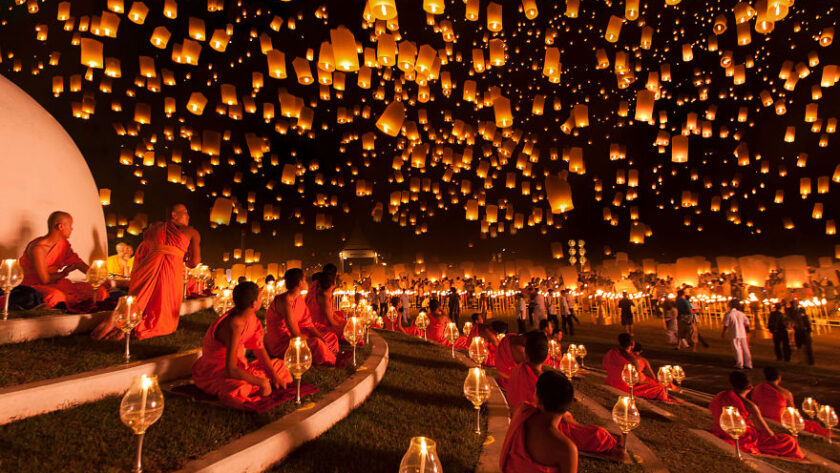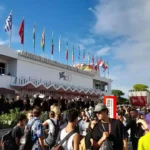Festivals are an integral part of human culture, celebrating everything from historical events to religious milestones, seasonal changes, and cultural heritage. These occasions bring communities together, foster a sense of belonging, and offer an opportunity for celebration, reflection, and joy. Across the globe, there are countless festivals, each with its unique significance, customs, and traditions. In this article, we will explore some of the most celebrated festivals around the world and delve into what they represent.
1. Diwali – The Festival of Lights (India)
Diwali, also known as Deepavali, is one of the most widely celebrated festivals in India and among Hindus globally. The festival, known as the “Festival of Lights,” typically takes place in October or November, marking the triumph of light over darkness and good over evil. It signifies the return of Lord Rama to his kingdom after defeating the demon king Ravana, as described in the epic Ramayana.
The festival is celebrated with great enthusiasm, as people clean their homes, decorate them with oil lamps (diyas), and burst fireworks to symbolize the victory of light. Diwali also signifies new beginnings, prosperity, and the importance of family, with people exchanging gifts and indulging in sweet treats. It’s a time for joy, reflection, and the reaffirmation of positive values in life.
2. Carnival – A Celebration of Music and Culture (Brazil)
Carnival is the biggest and most famous festival in Brazil, drawing millions of people to the streets for colorful parades, samba music, dancing, and vibrant costumes. Held just before Lent, Carnival marks a time of indulgence and festivity before the period of fasting and reflection in Christian tradition. The festival is celebrated with grandeur in cities like Rio de Janeiro, Salvador, and São Paulo, where elaborate floats and performers put on spectacular displays.
Carnival is a celebration of Brazil’s rich cultural heritage, with roots in African, Portuguese, and indigenous traditions. The lively music, dance, and costumes reflect Brazil’s diverse cultural mix and the joyous spirit of its people. Carnival symbolizes freedom, unity, and the expression of individual and collective identity.
3. Christmas – The Birth of Jesus Christ (Global)
Christmas is one of the most globally recognized and celebrated festivals, commemorating the birth of Jesus Christ. Observed on December 25th, Christmas brings together Christians and non-Christians alike, with festivities that include giving gifts, decorating homes with Christmas trees, and enjoying festive meals. The story of the nativity, the birth of Jesus in Bethlehem, is central to the holiday’s religious significance.
Beyond its religious roots, Christmas has evolved into a secular celebration marked by family gatherings, festive decorations, and charitable giving. It represents love, generosity, peace, and goodwill. The celebration is often marked by acts of kindness, strengthening family bonds, and fostering a sense of community and togetherness.
4. Chinese New Year – Welcoming New Beginnings (China and East Asia)
Chinese New Year, also known as the Spring Festival, is the most important traditional festival in China and several other East Asian countries. It typically takes place between late January and early February, depending on the lunar calendar. The festival marks the beginning of the lunar new year, and each year is associated with one of the 12 animals in the Chinese zodiac.
Chinese New Year is a time for family reunions, honoring ancestors, and wishing for good fortune in the coming year. Customs include wearing red for good luck, giving red envelopes (hongbao) filled with money, and feasting on traditional dishes. The festival signifies renewal, prosperity, and the importance of family and community. It’s a time to reflect on the past year and hope for better things in the year to come.
5. Oktoberfest – A Celebration of Beer and Bavarian Culture (Germany)
Oktoberfest is a world-famous festival held annually in Munich, Germany, celebrating Bavarian culture, beer, and hospitality. The festival, which begins in late September and runs for 16 to 18 days, draws millions of visitors from all over the world. It’s a time for people to come together to enjoy traditional Bavarian food, drink beer, and participate in fun activities like games, parades, and live music.
Oktoberfest symbolizes the heart of Bavarian tradition, with a deep connection to its history and the cultural importance of brewing in the region. It represents joy, camaraderie, and a celebration of life’s simple pleasures. While the festival is centered around beer, it also promotes unity, bringing people of all nationalities together to celebrate shared experiences.
6. Holi – The Festival of Colors (India)
Holi, known as the Festival of Colors, is one of India’s most vibrant and joyful festivals. It celebrates the arrival of spring and the triumph of good over evil, specifically the burning of the demoness Holika, as per Hindu mythology. The festival typically takes place in March and is marked by people throwing colored powders at one another, dancing to music, and feasting with family and friends.
Holi symbolizes renewal, the beauty of diversity, and the breaking down of social barriers. It is a time to embrace unity, as people of all backgrounds come together to celebrate, forgetting differences and fostering peace and love. The colorful celebrations also represent the blossoming of new life and the rejuvenation of nature after the cold winter months.
7. Thanksgiving – A Time for Gratitude (United States and Canada)
Thanksgiving is an annual holiday celebrated primarily in the United States and Canada, though many other countries have similar harvest festivals. In the U.S., Thanksgiving is observed on the fourth Thursday of November, while in Canada, it takes place on the second Monday in October. The holiday dates back to the early 17th century, when early settlers gave thanks for a bountiful harvest.
Thanksgiving is a time for families to gather, reflect on what they are grateful for, and share a meal together. The traditional meal often includes turkey, stuffing, and pumpkin pie. The festival represents gratitude, community, and the importance of family. It encourages people to take a step back and appreciate the blessings in their lives while spending time with loved ones.
8. Eid al-Fitr – A Celebration of Fasting and Spiritual Renewal (Islamic World)
Eid al-Fitr is one of the two major Islamic holidays, the other being Eid al-Adha. Eid al-Fitr marks the end of Ramadan, the holy month of fasting. The festival is celebrated by Muslims worldwide and is a time for prayer, feasting, and giving to charity. It falls on the first day of Shawwal, the month following Ramadan.
The festival is an expression of gratitude for the strength to complete the fast and is a time for reflection and spiritual renewal. Families come together to share meals, exchange gifts, and give to those in need, symbolizing the values of charity, compassion, and unity in the Muslim faith. Eid al-Fitr represents spiritual growth, family bonding, and community solidarity.
9. Day of the Dead (Día de los Muertos) – Honoring Ancestors (Mexico)
Día de los Muertos, or the Day of the Dead, is a Mexican festival that celebrates the lives of deceased loved ones. It is observed on November 1st and 2nd, coinciding with the Catholic holidays of All Saints’ Day and All Souls’ Day. The festival blends indigenous Mexican traditions with Catholic influences, creating a unique celebration of life and death.
Families create altars (ofrendas) to honor their loved ones, decorating them with flowers, candles, photographs, and food. It is believed that the spirits of the dead return to the world of the living during this time, and the living offer them gifts to ensure a smooth journey in the afterlife. Día de los Muertos symbolizes the cyclical nature of life, the importance of remembering one’s ancestors, and the celebration of life in all its forms.
10. Mardi Gras – A Festival of Fun and Extravagance (United States)
Mardi Gras, also known as Fat Tuesday, is a lively and extravagant festival celebrated primarily in New Orleans, Louisiana, and other parts of the world. The festival marks the culmination of Carnival season before the start of Lent. It’s a time of revelry, with parades, masquerade balls, street parties, and the famous tradition of throwing beads from floats.
Mardi Gras symbolizes indulgence and excess, a final celebration before the fasting and reflection of Lent. It represents freedom, community, and the joy of life. The festival’s colorful costumes, music, and dancing create a unique atmosphere of fun and creativity.
7 FAQs About Festivals
- What are festivals and why are they celebrated?
Festivals are special events that celebrate cultural, religious, or seasonal milestones. They are important because they help preserve traditions, bring communities together, and create a sense of belonging and joy. - What is the significance of colors in festivals?
Colors symbolize different meanings depending on the festival. For example, in Holi, colors represent the arrival of spring and the celebration of diversity, while red during Chinese New Year is believed to bring good luck. - How do festivals impact local economies?
Festivals contribute to local economies by attracting tourists, boosting hospitality services, and encouraging the sale of festival-related goods. This can generate significant revenue for local businesses. - Are festivals only for religious purposes?
No, many festivals have cultural, seasonal, or historical significance in addition to religious meaning. Examples include Thanksgiving and Oktoberfest, which are cultural celebrations rather than religious events. - Why do people exchange gifts during festivals?
Gift-giving during festivals is a way to show love, appreciation, and goodwill. It’s a tradition in many cultures that reinforces the bonds of family and friendship. - How do festivals foster unity?
Festivals bring people together to celebrate shared traditions and values. They often transcend differences in age, gender, and social status, creating a sense of community and collective joy. - How can festivals promote cultural understanding?
Festivals allow people from different backgrounds to experience and appreciate the traditions of other cultures, fostering mutual respect and understanding.
Conclusion
Festivals are a window into the heart of a culture, offering a glimpse into its traditions, values, and way of life. From religious observances to cultural celebrations and seasonal events, festivals create an opportunity for communities to come together and celebrate what makes them unique. Whether it’s Diwali in India, Carnival in Brazil, or Christmas worldwide, these festivals connect people across time and space, reminding us of our shared humanity and the importance of community, joy, and reflection.
Key Takeaways
- Festivals play an important role in preserving cultural traditions and bringing people together.
- Major festivals like Diwali, Christmas, and Carnival symbolize universal values such as love, unity, and prosperity.
- While rooted in religion, many festivals have evolved into secular celebrations that promote community spirit and enjoyment.
- Festivals impact local economies by drawing tourists and supporting local businesses.
- Understanding and participating in festivals from different cultures promotes global unity and cultural exchange.




